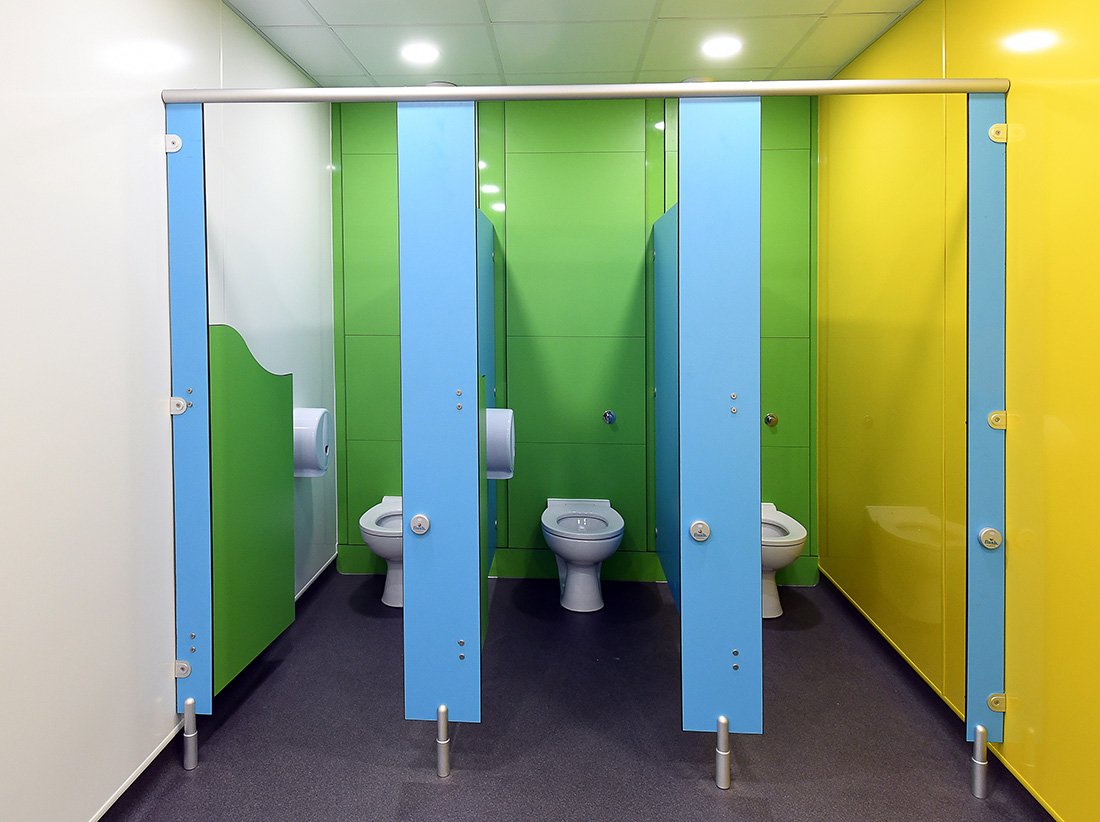Flushed with success: The crucial role of clean and inviting toilets in schools
Having good washrooms in schools offers several benefits that positively impact students, staff, and the overall learning environment. Here are some of the key benefits:
1. Hygiene and Health
Good washrooms promote hygiene and contribute to better health among students and staff. Clean and well-maintained washrooms help reduce the spread of germs, bacteria, and illnesses, creating a safer environment for everyone. Proper hand washing facilities, adequate soap, and hygiene products encourage good hand hygiene practices, which are essential in preventing the spread of infections.
2. Comfort and Well-being
Well-designed and properly equipped washrooms enhance the overall comfort and well-being of students and staff. Comfortable and functional fixtures, sufficient space, and proper ventilation contribute to a pleasant washroom experience. This, in turn, promotes positive feelings, reduces stress, and supports students' emotional well-being throughout the school day.
3. Privacy and Dignity
Good washrooms prioritize privacy and ensure that students and staff have a space where they can attend to their personal needs comfortably and with dignity. Adequate partitions, individual stalls, and appropriate door locks are crucial elements that contribute to privacy and respect.
4. Inclusivity and Accessibility
Accessible washrooms are essential for promoting inclusivity and accommodating individuals with disabilities or special needs. Good washrooms in schools should comply with accessibility standards and provide features such as grab bars, wider stalls, and wheelchair-accessible sinks and toilets. Inclusive washrooms foster an inclusive school environment and ensure equal access for all students and staff.
5. Positive School Culture
Well-maintained and properly equipped washrooms reflect the overall care and attention given to the school environment. They contribute to a positive school culture by demonstrating that the school values cleanliness, hygiene, and the well-being of its students and staff. Good washrooms create a sense of pride in the school community and contribute to a positive overall learning environment.
6. Educational Opportunities
Washrooms can serve as educational spaces, providing opportunities to promote hygiene education and healthy habits. Educational materials, posters, and messages displayed in washrooms can reinforce proper handwashing techniques, promote hygiene practices, and educate students about health-related topics.
7. Parent and Visitor Impressions
Well-maintained washrooms leave a positive impression on parents, visitors, and prospective students. Clean, hygienic, and functional washrooms reflect the school's commitment to providing a safe and conducive learning environment, which can influence the perception and reputation of the school.
By prioritising good washrooms in schools, educational institutions can create an environment that supports the health, well-being, and comfort of students and staff, fosters inclusivity, and promotes positive hygiene practices.


